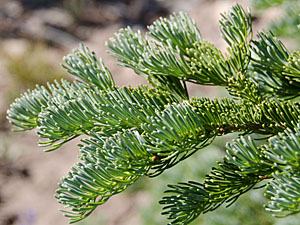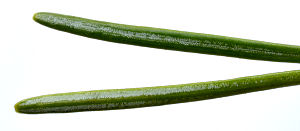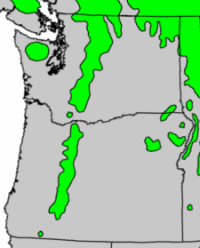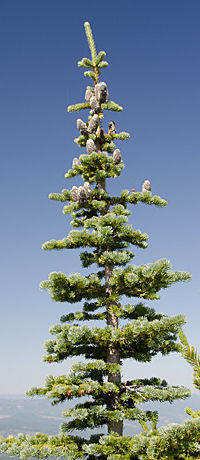
Subalpine fir often grows at the timberline, where it is easily recognized by the narrow spire shape of its upper branches, a clear adaptation to heavy snowfall. Below the timberline, it can grow to over 150 feet (45 meters).
Needles: The needles curve upward in a uniform manner. They have white lines on both sides, two on the lower surface and one on top. The top of the tree forms a distinctive spire with short branches.


Needles - upper and lower surface
Cones: The purple cones sit upright on the branch and fall apart at maturity, leaving a cone core spike on the branch. The cones often ooze a white resin.
Where it grows: Subalpine fir grows in the Cascades and Olympics. It also grows throughout the Rocky Mountains and northward to Alaska. Although subalpine fir is shade-tolerant, it does not compete well with other conifers growing in the shade.
Subalpine fir at Hoyt Arboretum

Similar tree: Pacific silver fir often grows near the timberline and has a similar spire-like appearance, but has white lines only on the lower side of the needles.
Uses: While it has few commercial uses, subalpine ffir is an important component of the subalpine forest community, providing habitat for animals and protecting watersheds that provide our drinking water.
Names: Lasiocarpa means "hairy fruit," a reference to the fibers that protrude from the cone scales (not shown in photo). Other common names: alpine fir, white fir, balsam fir, and Rocky Mountain fir.

© 2011 Ken Denniston